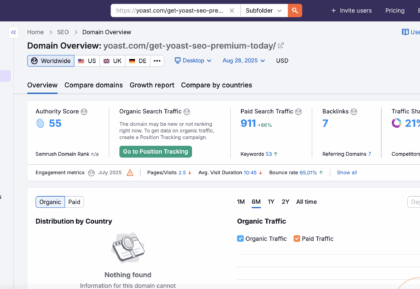The Importance of Quantitative Data Analysis
Quantitative data analysis is a crucial aspect of research and decision-making across various fields, including business, science, and social sciences. It involves the process of collecting, interpreting, and summarising numerical data to identify patterns, trends, and relationships.
Key Steps in Quantitative Data Analysis
The process of quantitative data analysis typically involves several key steps:
- Data Collection: Gathering relevant numerical data through surveys, experiments, or other methods.
- Data Cleaning: Preparing the data by removing errors, inconsistencies, or outliers that could skew the analysis.
- Data Exploration: Exploring the dataset through descriptive statistics to understand its characteristics.
- Hypothesis Testing: Using statistical tests to determine if there are significant relationships between variables.
- Data Interpretation: Drawing meaningful conclusions from the analysis results and making informed decisions based on the findings.
The Role of Quantitative Data Analysis in Decision-Making
Quantitative data analysis plays a vital role in informing evidence-based decision-making. By analysing numerical data using statistical techniques, researchers and decision-makers can uncover insights that help them understand complex phenomena, predict outcomes, and evaluate the effectiveness of interventions.
Applications of Quantitative Data Analysis
The applications of quantitative data analysis are diverse and far-reaching. In business, it is used to assess market trends, customer behaviour, and financial performance. In science, it helps researchers test hypotheses and validate theories. In social sciences, it enables policymakers to evaluate the impact of social programs and policies.
Conclusion
In conclusion, quantitative data analysis is a powerful tool for extracting valuable insights from numerical data. By following a systematic approach to analysing data, researchers and decision-makers can make informed choices that drive innovation, improve processes, and achieve desired outcomes.
7 Essential Tips for Effective Quantitative Data Analysis
- Ensure data is clean and accurate before analysis.
- Define clear research questions or objectives to guide your analysis.
- Choose appropriate statistical methods based on the type of data and research question.
- Visualise data using graphs or charts to better understand patterns and trends.
- Check assumptions of statistical tests before interpreting results.
- Consider the practical significance along with statistical significance of findings.
- Document your analysis process thoroughly for reproducibility.
Ensure data is clean and accurate before analysis.
It is essential to ensure that the data used for quantitative analysis is clean and accurate before proceeding with the analysis. Data cleaning involves identifying and rectifying errors, inconsistencies, and missing values in the dataset to prevent misleading results. By meticulously preparing the data through thorough validation and verification processes, researchers can enhance the reliability and validity of their analysis, leading to more robust conclusions and informed decision-making based on accurate information.
Define clear research questions or objectives to guide your analysis.
To ensure a focused and effective quantitative data analysis process, it is essential to define clear research questions or objectives that will serve as a roadmap for the analysis. By establishing specific goals at the outset, researchers can direct their efforts towards collecting relevant data and applying appropriate statistical techniques to answer those questions. Clear research questions not only help in structuring the analysis but also ensure that the insights gained are directly aligned with the intended outcomes, enhancing the overall quality and relevance of the findings.
Choose appropriate statistical methods based on the type of data and research question.
When conducting quantitative data analysis, it is essential to select the most suitable statistical methods that align with the type of data being analysed and the research question at hand. By choosing appropriate statistical techniques, researchers can ensure accurate and meaningful results that address the specific objectives of their study. Whether it involves comparing groups, measuring associations, or predicting outcomes, matching the right statistical methods to the data and research question is key to obtaining reliable insights and drawing valid conclusions.
Visualise data using graphs or charts to better understand patterns and trends.
Visualising data through graphs or charts is a valuable tip in quantitative data analysis. By representing numerical information visually, patterns and trends become more apparent and easier to interpret. Graphs and charts provide a clear and concise way to communicate complex data relationships, making it simpler for researchers and decision-makers to draw meaningful insights from the information at hand. Visualisation enhances the understanding of data, enabling stakeholders to make informed decisions based on a comprehensive analysis of the numerical data presented.
Check assumptions of statistical tests before interpreting results.
When conducting quantitative data analysis, it is essential to check the assumptions of statistical tests before interpreting the results. By ensuring that the underlying assumptions of the statistical tests are met, researchers can have confidence in the validity and reliability of their findings. Failing to validate these assumptions may lead to inaccurate conclusions and misinterpretations of data. Therefore, taking the time to verify the assumptions before proceeding with data interpretation is a critical step in ensuring the integrity of the analysis process.
Consider the practical significance along with statistical significance of findings.
When conducting quantitative data analysis, it is essential to consider not only the statistical significance of the findings but also their practical significance. While statistical significance indicates whether an observed result is likely due to a real effect rather than random chance, practical significance assesses the actual impact or relevance of the findings in real-world terms. By evaluating both aspects, researchers can ensure that their conclusions are not only statistically valid but also meaningful and applicable in practical contexts. This holistic approach to data analysis enhances the credibility and usefulness of research outcomes.
Document your analysis process thoroughly for reproducibility.
When conducting quantitative data analysis, it is essential to document your analysis process thoroughly to ensure reproducibility. By documenting each step taken during the analysis, including data collection methods, cleaning procedures, statistical tests applied, and interpretation of results, you create a transparent and replicable process. This documentation not only enhances the credibility of your findings but also allows others to reproduce the analysis independently and verify the results. Additionally, thorough documentation facilitates collaboration with colleagues and enables future researchers to build upon your work effectively.






